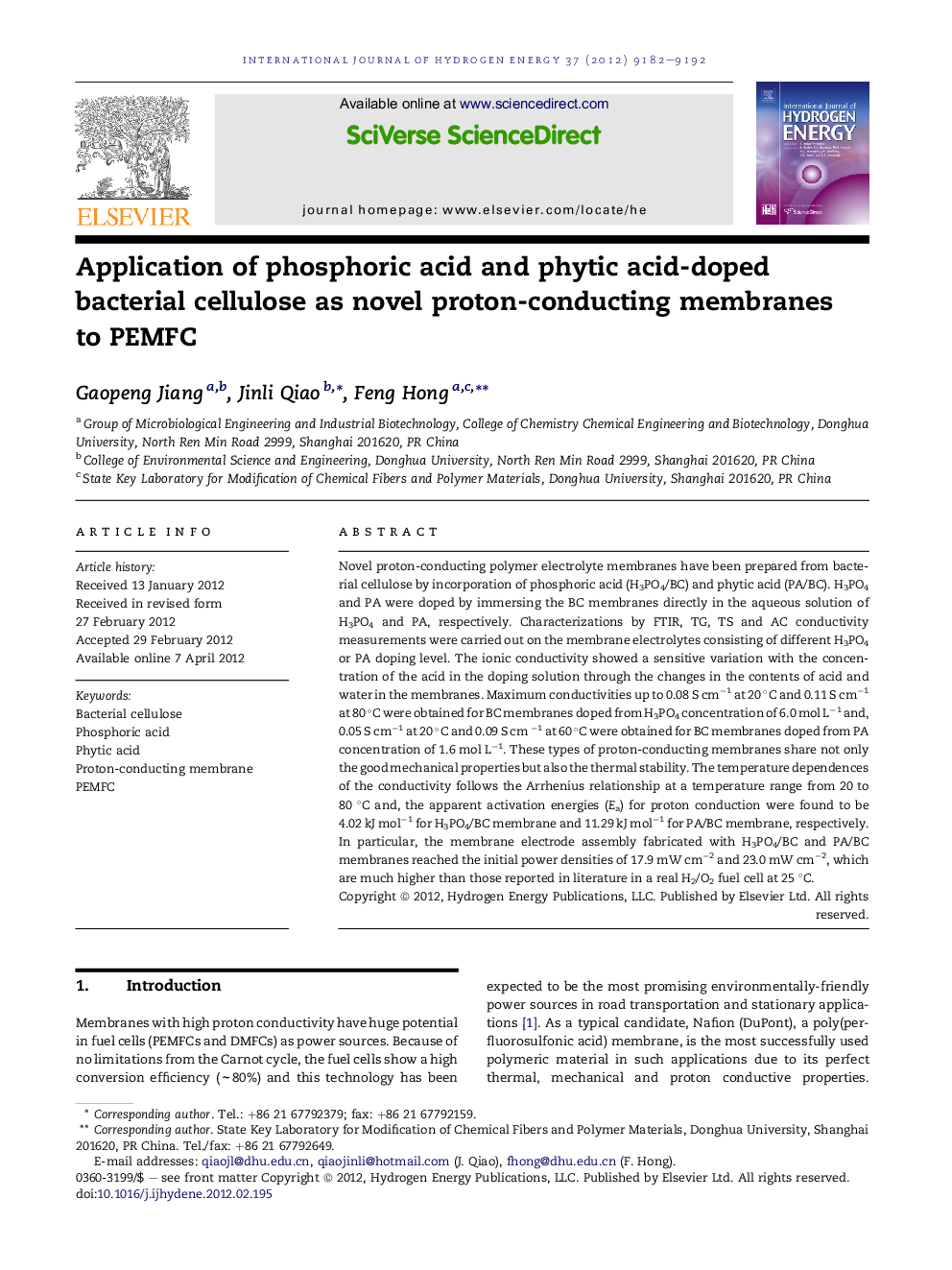| کد مقاله | کد نشریه | سال انتشار | مقاله انگلیسی | نسخه تمام متن |
|---|---|---|---|---|
| 1271415 | 1497558 | 2012 | 11 صفحه PDF | دانلود رایگان |

Novel proton-conducting polymer electrolyte membranes have been prepared from bacterial cellulose by incorporation of phosphoric acid (H3PO4/BC) and phytic acid (PA/BC). H3PO4 and PA were doped by immersing the BC membranes directly in the aqueous solution of H3PO4 and PA, respectively. Characterizations by FTIR, TG, TS and AC conductivity measurements were carried out on the membrane electrolytes consisting of different H3PO4 or PA doping level. The ionic conductivity showed a sensitive variation with the concentration of the acid in the doping solution through the changes in the contents of acid and water in the membranes. Maximum conductivities up to 0.08 S cm−1 at 20 °C and 0.11 S cm−1 at 80 °C were obtained for BC membranes doped from H3PO4 concentration of 6.0 mol L−1 and, 0.05 S cm−1 at 20 °C and 0.09 S cm −1 at 60 °C were obtained for BC membranes doped from PA concentration of 1.6 mol L−1. These types of proton-conducting membranes share not only the good mechanical properties but also the thermal stability. The temperature dependences of the conductivity follows the Arrhenius relationship at a temperature range from 20 to 80 °C and, the apparent activation energies (Ea) for proton conduction were found to be 4.02 kJ mol−1 for H3PO4/BC membrane and 11.29 kJ mol−1 for PA/BC membrane, respectively. In particular, the membrane electrode assembly fabricated with H3PO4/BC and PA/BC membranes reached the initial power densities of 17.9 mW cm−2 and 23.0 mW cm−2, which are much higher than those reported in literature in a real H2/O2 fuel cell at 25 °C.
► Two proton-conducting membranes were prepared by immersing bacterial cellulose (BC) into H3PO4 and PA.
► H3PO4/BC membrane showed a high proton conductivity of 0.15 S cm−1.
► PA/BC membrane showed a high proton conductivity of 0.08 S cm−1.
► The MEA fabricated with H3PO4/BC showed an initial power density of 17.9 mW cm−2.
► The MEA fabricated with PA/BC showed an initial power density 23.0 mW cm−2.
Journal: International Journal of Hydrogen Energy - Volume 37, Issue 11, June 2012, Pages 9182–9192